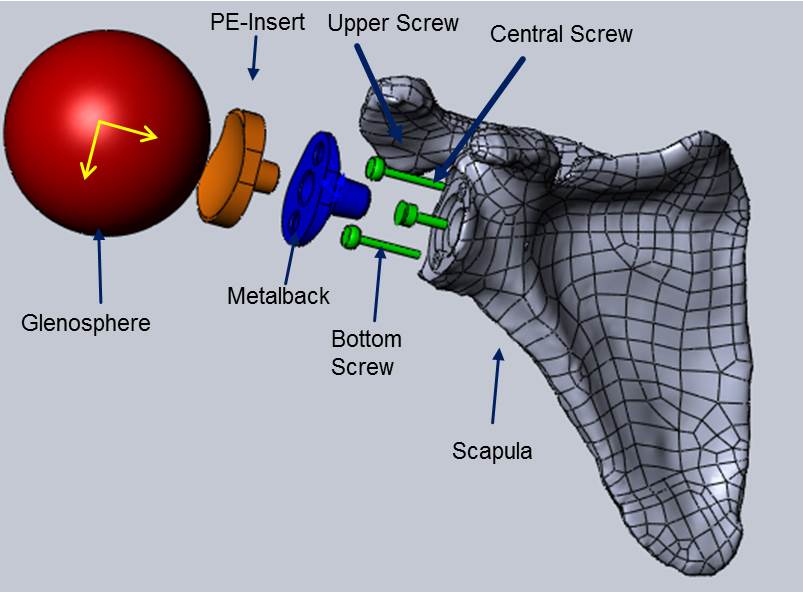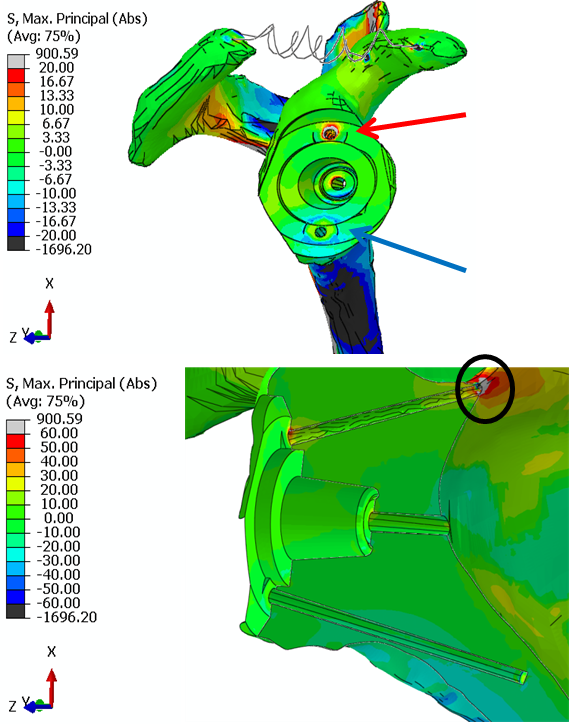Anatomical Shoulder Prosthesis
For the last decades, Total Shoulder Arthroplasty (TSA) has proven itself as a successful surgical procedure to re-establish stability and movement for a diseased or damaged shoulder joint. Two main designs have emerged: the anatomical and the reverse shoulder prostheses. The reverse shoulder prosthesis, although newer is a more and more accepted and successful alternative for rotator cuff deficiency. But which design is better? Both procedures are associated with various and inter-related post-operative complications and over the years, several designs were developed to address issues of implant instability, loosening and failure.
The purpose of the present work is to analyze the influence of some of the surgical factors that play a role on the success or failure of the implants. The effects of screw angle, length, friction coefficients between the implant elements are investigated on 3D models of both anatomical and reverse shoulder prostheses by means of finite element (FE) analysis.
The 3D models are derived from human clinical CT data. The models are simulated under a load case of compressive and shear forces. The stresses on the scapula and on the prosthesis elements as well as the relative movement at the bone-implant interface are investigated and compared between the models. The aim of the study is to provide an accurate comparison of both designs using the same realistic loading conditions and thus to identify the superior design.


